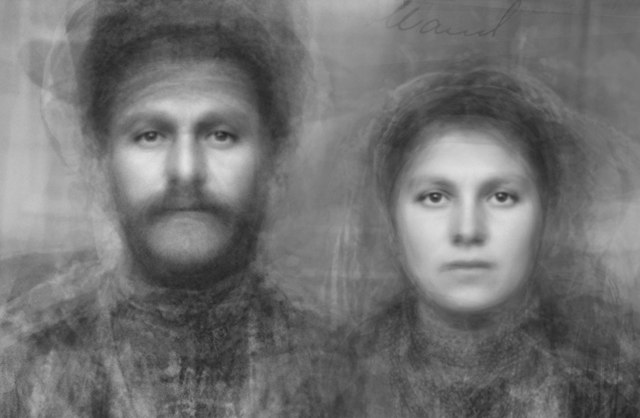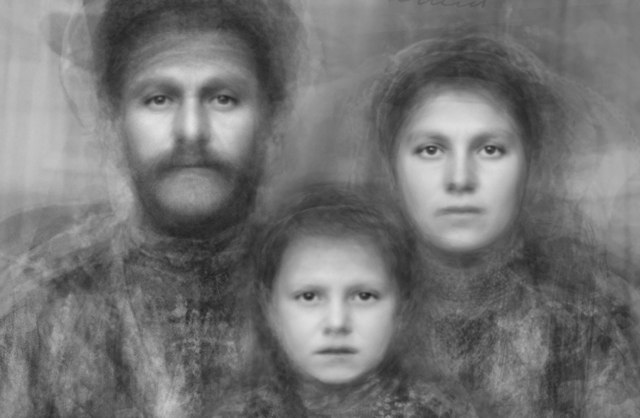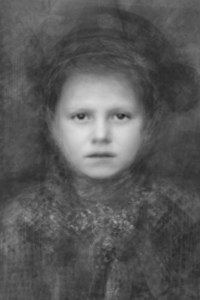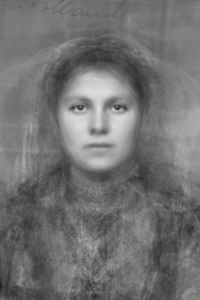The images show black-and-white portraits of a man, a woman and a child. Their proximity in the group portraits suggests they might be a couple respectively a family. Yet, there is no further evidence for this assumption. Their personal status remains as foggy as their facial expressions, which seem to fluctuate between friendly, sad and neutral. Headdress and clothing diffuse into a blurriness that allows no clear assumptions, yet gives a vague feeling of not being contemporary.
The images are composed from portraits taken by Augustus F. Sherman in the early 20th century. Sherman was working for the Bureau of Immigration on Ellis Island where he also practiced his hobby photography by taking portraits of immigrants. Over the course of 20 years Sherman took about 250 pictures of people waiting for their immigration procedure.
Grand Great-grand was created by digitally superimposing Sherman's images – a contemporary variation of a photographic technique (composite photography), that was invented by Sir Francis Galton (GB) in the 1870s. Galton – who was later called the “father of eugenics” – superimposed portrait of people with similar personal, professional or social identities (criminals, soldiers, family members) in order to retrieve information from which to build standard models of supposed human types.
So – following Galton's way of thinking – what is it that all these people in the portraits have in common? They all migrated to America coming through Ellis Island, where they all met Augustus Sherman. They all came from Europe, Russia, Balkan, Middle East and North Africa which makes them in the terminology of US authorities “caucasian”. Being immigrants, the majority of them most certainly entered the American society at the lower end of the social ladder. Some of them might have had a cultural shock, others might have even been facing suspicion or rejection. But I think it is adequate to say, that all of them were driven by the expectation to improve their individual living situations – either fleeing from hunger or hoping for a new start in the new world. And they became American.
The whole is more than the sum of its parts. Galton probably very much agreed with Aristoteles. Yet I think that, in the case of composite photography, the “more” doesn't necessarily manifest in the meta-information that is presumedly achieved by the accumulation and compression of information, but rather lies in the absence of distinct information – in the blurriness and fogginess that gives space for interpretation and fantasy.
Being European and looking at the image, you might see your grand- or great-grant-uncle, -aunt or -cousin. The one who emigrated from Europe towards America.
Being “caucasian” American and looking at the image, you might see your grand- or great-grand-parents. And you might notice: Migration runs in the family.





